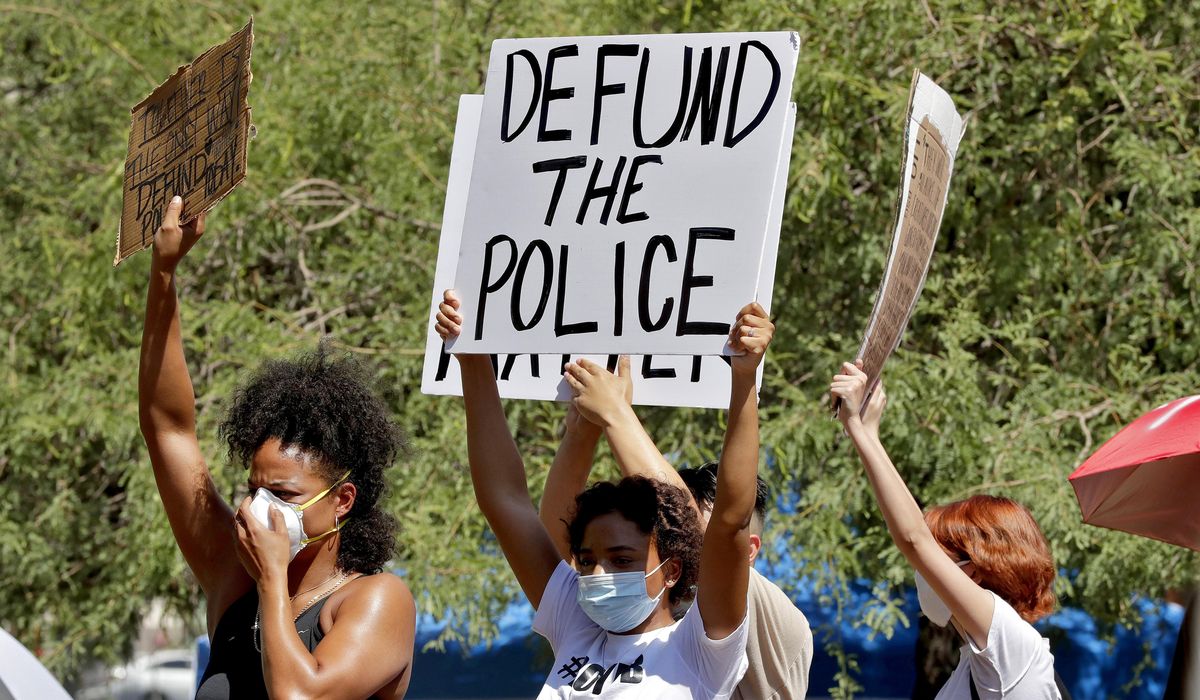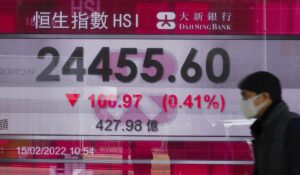Mental health specialists say the nation’s anti-police climate is compounding struggles by traumatized police officers, who become more likely to make mistakes in potentially deadly encounters that are cited by activists in their anti-cop narratives.
“By telling them they are all bad people, that’s going to lead to trauma,” said Cherylynn Lee, a police psychologist who works with departments. “When someone is suffering trauma or stress, it has an impact on the brain. It is more difficult to concentrate and clouds thinking.”
A former police officer in Fargo, North Dakota, is suing to get his job after being fired last month for mishandling two cases, saying he suffered from post-traumatic stress disorder (PTSD). A former officer who was Tased in a 2019 struggle with law enforcement filed a lawsuit last week against a Florida police department, claiming he has PTSD.
PTSD can arise among officers not only from physical attacks but also distressing situations such as encountering abused children and dead bodies. The effects of PTSD include substance abuse, sleeplessness and unprovoked aggression, which all can impair an officer’s judgment.
“Until we start looking at these factors, we are going to have judgment errors. They are going to most heavily fall on the minority community, which has already been impacted by systemic racism,” said Kevin Gilmartin, a former police officer who has written books on officers’ emotional wellness.
Through the first six weeks of 2022, 19 officers died by suicide, according to data from Blue Help, a nonprofit that works with officers dealing with mental health issues. The pace for police suicide is similar to that in 2021, when 153 officers took their own life — the second-leading cause of death for police behind COVID-19 last year.
This year is off to a violent start, with 10 officers having died violently at the hands of criminals.
It is estimated that between 17% and 35% of the nation’s police officers have experienced PTSD or depression at some point in their career, according to a 2020 Northern Illinois University.
A 2011 Harvard University study of 5,000 police officers found that 40% had sleep disorders, one symptom of PTSD. Those who screened positive for a sleep disorder had a 25% higher risk of expressing uncontrolled anger and a 35% higher chance of having a complaint filed against them.
They also had a 43% higher chance of making a serious administrative error, ranging from mistakenly believing an outstanding warrant has been issued for a suspect to errors in filing a report.
Ms. Lee said anti-police rhetoric is exacerbating PTSD in officers who already are struggling. It reduces an officers’ “resiliency,” the term used to describe a person’s ability to adapt and recover from trauma, she said.
“Something restorative like a child waving to an officer on a bike patrol can promote resiliency,” Ms. Lee said. “But those interactions are happening less and less and the impact of that community mistrust reduces resiliency, so they have less to work with.”
At least 189 Minneapolis police officers — more than 20% of the department’s staff — last year filed disability claims, saying they were suffering from PTSD resulting from the protests that broke out in response to George Floyd’s murder in 2020.
Roughly a dozen officers who filed claims were inside the city’s Third Precinct station, which was burned down during the social justice riots. The city has already paid out more than $3.5 million in disability claims for PTSD.
Ms. Lee says she is seeing three times as many clients as she was in 2019 and now has a waitlist for her services. Waitlists have become so common, officers seeking treatment have developed their own slang for it, calling it “rostering.”
“Most clinicians are not taking on new clients or overextended,” she said. “It takes a certain kind of clinician to work with law enforcement.”
Nearly every police department offers an Employee Assistance Program, which is tasked with assisting officers dealing with the stress of the job.
However, few officers take advantage of the program because it is paid for by the city, and tensions between officers and local governments are at an all-time low, said Nick Edwards, a former detective who suffered from PTSD.
“They have this resource available, but they don’t trust it,” said Mr. Edwards, who works with 911 At Ease International, a nonprofit that supports first responders suffering from mental health issues.
That has sent officers to private treatment, according to data from 911 At Ease, which says up to 25% of employees at police departments where they are established use their services compared to just 3% for assistance programs.
Mr. Edwards sees the toll the current environment is having on police: He’s a member of a Facebook group of roughly 40,000 current and former police officers.
He says the group’s tone has changed from camaraderie to frustration. Officers used to post memes and funny videos, but they are now asking for help or discussing how to transition to another job, he says.
“There is a sense of helplessness. They are asking why they are doing this because the community hates them, their department isn’t supporting them. It’s alarming,” Mr. Edwards said.
Meanwhile, retirements and resignations are soaring. A 2021 survey of roughly 200 departments by the Police Executive Research Forum found a 45% increase in the retirement rate and a 20% increase in resignations compared to 2020.
The timing of the exodus comes as cities are seeing a major increase in shootings and murders with 16 U.S. cities setting homicide records in 2021.
Solutions to reducing PTSD among officers remain elusive.
Mr. Gilmartin says officers need more time off from their job, saying the long hours cause fatigue and hamper officers’ mental and physical ability. He notes that Canada and Australia give police between seven and nine weeks of vacation, nearly three times their U.S. counterparts.
However, with fewer officers on the job, more officers are working longer hours than ever.
Mr. Edwards said officers are getting better about asking for help and departments are recognizing the need to provide treatment.
For example, the Rochester, New York, Police Department this month became the latest to launch an Officer Wellness and Resilience Unit to help officers recognize how the stress of the job is impacting their mental health. It differs from assistance programs because it is tailored for the specific challenges facing law enforcement.
“There are a lot more resources, and it’s becoming more mainstream in departments to ask for help,” Mr. Edwards said. “When I was in law enforcement, we didn’t talk about it. That’s the flip side to this environment, officers are stepping up to ask for help.”



















